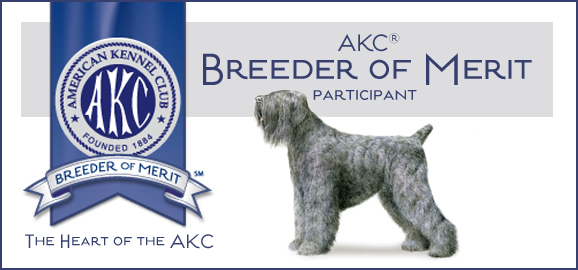Our journey with the BRTCC - Archive of the Black Russian Terrier Club of Canada (BRTCC), 2005-2014, where we held various positions in the Board of Directors
CLUBS
BRTCC - Black Russian Terrier Club of Canada
BRTCA - Black Russian Terrier Club of America
CKC - Canadian Kennel Club
AKC - American Kennel Club
FCI - Fédération Cynologique Internationale
UKC - United Kennel Club
ABIDS - All Breed International Dog Shows, Inc
CFC - Canine Federation of Canada
History of the breed
During World War II the population of working dogs in the Soviet Union had been dramatically reduced. Immediately after the end of the War, when the process of rebuilding of an exhausted and grief-stricken country had started, the Red Army Command, Police, and Soviet Government realized that the situation with the availability of working dogs had to be improved. The Soviet Government had ordered the Central Military Institute of Canine Studies ("Red Star" Kennel) to prepare large numbers of guard dogs, which would be used in guarding military and industrial installations in a variety of climates.
The breeding work undertaken by the "Red Star" was geared towards creation of a large-sized, physically powerful and undemanding dog. During the initial stage of the breeding work, where the scientists of the "Red Star" mixed various breeds of working dogs, they observed that one of the Giant Schnauzers, named Roy, mixed with females of different breeds always produced large black dogs with hair on the head and legs. This ability was taken into consideration by the "Red Star"'s personnel and the general direction of the breeding was defined. Today, Roy is credited with being a single most important ancestor of all Black Russian Terriers (BRTs).
During later stages of breeding, a variety of breeds had been used, but the main contributors to BRTs are: Giant Schnauzers, Rottweilers, Airdale Terriers and Newfoundlands. Also, Great Danes, Caucasian Ovcharkas and German Shepherds were used, along with some other breeds. The first generation of BRTs consisted of dogs of different types and could not be called a breed. Later, the breeding was refined and after a rigorous process of exclusion of unwanted breed characteristics, the new breed started getting closer to its modern appearance.
In 1955, for creating the Black Russian Terrier, the scientists of the "Red Star" had received a Gold Medal of Soviet National Exhibition - a very high honor at the time. During the 1950s, the "Red Star" co-operated in its BRT breeding work with various Kennel Clubs in the USSR by placing BRT puppies in the hands of the best breeders in Moscow, Leningrad and Sverdlovsk.
In 1957, 43 BRTs were shown in the National Show of Working and Hunting Dogs. The breed generated lots of interest from breeders from all around the country, who were previously unfamiliar with it, and the breed's popularity had started to increase.
In 1958, the first BRT breed standard was published and was used in the streamlining of the subsequent breeding work.
By the end of the 1970s, there were more than 800 litters produced. More than 4000 puppies conforming to the Breed Standard existed, but the BRT had not yet received an official breed status. At the same time, the first BRT puppies emerged outside the USSR, in Finland, and quickly spread all over Europe. The breed gained lots of popularity in Germany, Poland, and Hungary, and local kennels started to breed BRTs in these countries.
In the beginning of 1980s, BRTs were first shown in international Dog Shows and were extremely well received.
In 1981, the Ministry of Agriculture of the USSR recognized the Black Russian Terrier as an independent breed and approved the first National Breed Standard.
In 1984, the FCI International Assembly had recognized Black Russian Terrier and the breed standard was approved under #327.
Black Russian Terriers were brought to North America around 1991, and American Kennel Club's (AKC) Foundation Stock Service started to register them in 1999. The breed was fully recognized by AKC in July of 2004.
Black Russian Terrier is a Listed Breed in the Canadian Kennel Club from July of 2007 and is eligible to compete in Group 3 - Working Dogs.
For many years, BRTs were used as guard dogs - they possess the best working abilities and are extremely reliable. It is said that they adopted the best qualities of their ancestors - energy and agility of the Giant Schnautzer, cleverness and jolliness of the Airedale Terrier, power and courage of the Rottweiler, and modesty and steadiness of a Newfoundland. Also, their mixed-breed ancestors have given BRTs excellent health, stamina, and extreme intelligence.
Black Russian Terriers today are not as much guard dogs, although nobody can take that quality away from them, as they are very loyal companions and family favorites.

